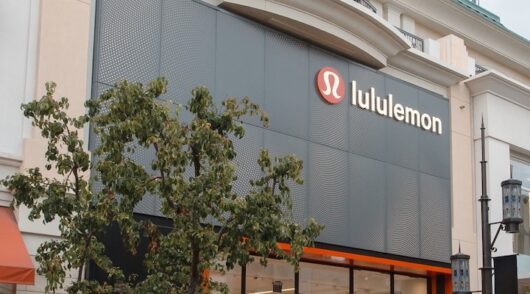For the first 12 years of its existence, JD’s business model has largely been based on retailing.
But now the company is morphing into something quite different, explains Winston Cheng, president international, at JD.
“For the next 12 years where we want to be is a technology company or technology focused. So the first 12 years as a retailer we were Gross Merchandise Volume-focused. The second 12 years is going to be about helping brands and retailers and others build their online presence, build their brands and have more efficient marketing,” Cheng told Inside Retail Asia.
“Then we will help them on the supply chain, because there’s increasing pressure on their business – not only are same-store sales under pressure, but also pricing. So they need to make sure they’re producing the right things.”
Data is driving the new JD approach. Already, JD serves more than 300 million customers per year (82 per cent of them via mobile). For each of those customers, the company has more than 10,000 tags representing online shopping behaviour, browsing habits and history of when, where and how they shop. Now the company’s challenge is expanding that knowledge into consumers’ offline shopping behaviour.
Shop with JD and the company knows things like how much you are spending in the store. What you are putting into the basket, what you’re taking out. They can see your decision making as you proceed to shop, even if you’re saving an item for the future when it may be on special or a sale is coming.
“So we want to be able to match that with offline data,” explains Cheng. “We want to help offline retailers collect that data.” And then, seamlessly merge it with online data for a full picture of a customer.
“So with so much data, how do we integrate the social data, the transaction data and the offline data? And how do we get the offline data? [A retailer’s] offline data is sometimes limited: they may or may not know only when a customer makes a transaction. But we want to help the customer as they enter the store, as they’re browsing and as they are making decisions, spending how much time in front of a certain SKU and touching and feeling. We want to be able to get all of that data for offline stores as well.”
Mix all that data together and you can build an invaluable picture of demand and transaction history that can be used by supply chain managers.
JD wants to tell participants along the supply chain what products they should make, where they need to be – and when.
“Then we can help them connect with the customer and we help them deliver to the customer. We share that data to help them with their total supply chain solution.”
Local knowhow
Cheng, who is responsible for global business initiatives as well as international investments and mergers and acquisitions for JD, told Inside Retail Asia that one of the company’s strengths, despite its size, is understanding local culture and “local knowhow” when it enters new markets, both in Asia and abroad (where it has recently entered Spain).
“That’s why we tend to partner with local [companies]. You need to be local – your traffic is local, the language is local, so everything becomes localised.”
And the range must be tailored market by market. The range of SKUs offered in Indonesia, for example, has to be different to Mainland China and other Asian markets.
“Retail is local, whether it’s online or offline. So you could do cross border to go into a market [but] will that reach a certain scale? Also, today people have higher and higher expectations. They want anything, anytime, anywhere, right away.” Thus cross-border solutions won’t work in many markets because customers don’t want to wait long enough for delivery.
Asean is home to 600 million people, which makes it the third or fourth largest market in the world. “But so many countries make up Asean – they have different cultures, different tastes, different languages. Even Indonesia with 280 million people – there are so many islands in Indonesia to satisfy. So from a logistics standpoint, it’s very difficult.”
Hong Kong misunderstood
Meanwhile, JD is planning to ramp up its focus on Hong Kong’s online retail market, hinting the scale of e-commerce there is more significant than people believe.
The Mainland China-headquartered online retailer plans more emphasis on cross-border e-commerce in Hong Kong.
“We believe it’s a very natural extension in terms of consumer tastes,” he said.
Given JD’s expertise in logistics, the company stands to deliver products and services in the territory “very easily”.
Furthermore, while there has been widespread discussion about why e-commerce accounts for less than 5 per cent of the city’s total domestic retail spending, Cheng argues people are missing the point.
“First of all, the absolute number is actually quite imperative. The absolute dollar number is actually not a small market, it’s quite big. The [market] penetration is low, but that’s an opportunity. I think it’s just that people have been so used to the old way of doing things, they continue to do it that way.”
Cheng believes younger Hongkongers are ready to embrace e-commerce, especially when it comes to shopping for items that are really “a chore” to buy like dry groceries.
“They … want to finish these chores easier, right. It’s not exciting to have to go and buy your toilet paper or your bottled water, for example. You should be able to just tap those things and order them.
“But I think certain things like, you know, making sure that this fruit looks exactly like the picture, is very hard to satisfy.”
So Cheng believes while consumers want to continue to ‘touch and feel’ goods like fresh produce, when it comes to ordering cups or a mobile phone, that is no longer so important.
“You know the specs and features.”






